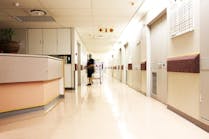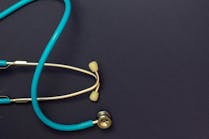According to a report from UCLA Health, liquid biopsies for certain cancers are gaining popularity because they’re less invasive than traditional ones.
They can be used to monitor cancer treatment, providing physicians a way to reliably check to see whether that treatment is working.
UCLA researchers investigating the efficacy of a botanical drug called APG-157 on patients with head and neck cancer (HNC) have found that analyzing RNA in blood plasma could be a useful biomarker of patient response to APG-157.
“We report, for the first time, a methodology that uses circulating plasma cell-free RNA (cfRNA) as a sensitive indicator of patient response upon drug treatment,” states the study, published in Frontiers in Oncology.
In the Phase 1 trial, plasma was collected from six patients with HNC and four healthy patients who took APG-157, a lozenge that contains curcumin, an active compound found in the spice turmeric. A study published in the journal Cancer in 2020, which the UCLA researchers also worked on, suggested that APG-157 would have a therapeutic effect in HNC patients who are undergoing immunotherapy. The reason being “APG-157 brings immune cells into the tumor micro-environment, which we had already showed,” Srivatsan said.
Using RNA as a biomarker to measure APG-157’s efficacy, as opposed to the more commonly used DNA, is the new advance.
“Sequencing RNA from plasma is fraught with difficulty, because RNA degrades very easily,” Pellegrini said. “It is not a stable molecule, and also there are minute amounts in the plasma.” After the RNA samples were analyzed, the researchers “were able to detect significant changes following APG-157 treatment,” the authors wrote.
“We were able to show that following the therapy, there were significant changes in the plasma RNA,” Pellegrini said, “and these could be interpreted from a mechanistic perspective as part of the response to the therapy, which included changes in the immune response as the immune system began to attack the tumor.”





